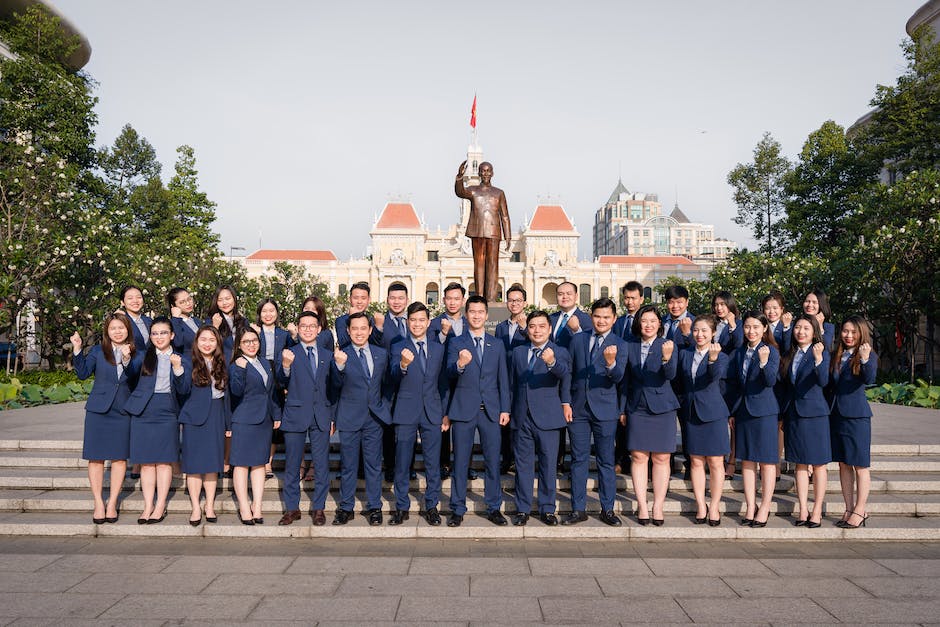Table of Contents
- Introduction
- The Evolution of Microsoft’s Leadership: A Look at Gates’ Legacy and Nadella’s Vision
- Key Strategies and Decisions that Led to Microsoft’s Smooth Succession
- Nadella’s Leadership Style: Examining the Impact on Microsoft’s Growth and Innovation
- Lessons Learned from Microsoft’s Succession Process: Insights for Other Companies in Transition
- Q&A
- Conclusion
Seamless transition: Gates to Nadella
Introduction
Microsoft’s smooth succession from Bill Gates to Satya Nadella marks a significant transition in the company’s leadership. This transition not only reflects the changing landscape of the technology industry but also highlights Microsoft’s ability to adapt and thrive under new leadership. With Bill Gates’ departure as CEO in 2000 and Satya Nadella’s appointment in 2014, Microsoft has successfully navigated the challenges of leadership transition, ensuring continuity and driving innovation in the ever-evolving tech world.
The Evolution of Microsoft’s Leadership: A Look at Gates’ Legacy and Nadella’s Vision

Microsoft’s Smooth Succession: From Gates to Nadella
The Evolution of Microsoft’s Leadership: A Look at Gates’ Legacy and Nadella’s Vision
When it comes to the world of technology, few names carry as much weight as Microsoft. From its humble beginnings in 1975, the company has grown to become a global powerhouse, shaping the way we work, communicate, and live. Central to Microsoft’s success has been its leadership, with two key figures standing out: Bill Gates and Satya Nadella. In this article, we will explore the evolution of Microsoft’s leadership, examining Gates’ legacy and Nadella’s vision for the future.
Bill Gates, the co-founder of Microsoft, is a name synonymous with innovation and entrepreneurship. Under his leadership, Microsoft became the dominant force in the personal computer industry, revolutionizing the way we interact with technology. Gates’ vision was to put a computer on every desk and in every home, a goal that seemed audacious at the time but has since become a reality. His relentless drive and determination propelled Microsoft to new heights, making it one of the most valuable companies in the world.
Gates’ legacy at Microsoft is undeniable. He not only shaped the company’s products and technologies but also its culture. Microsoft became known for its competitive spirit, its focus on excellence, and its commitment to innovation. Gates fostered a culture of collaboration and encouraged employees to think big and take risks. This culture of innovation continues to be a defining characteristic of Microsoft even today.
However, as Gates stepped down from his role as CEO in 2000, the question of who would succeed him loomed large. The task of filling Gates’ shoes was no small feat, but Satya Nadella, a longtime Microsoft employee, rose to the challenge. Nadella, who took over as CEO in 2014, brought a fresh perspective and a new vision for Microsoft.
Nadella’s leadership style is markedly different from Gates’. While Gates was known for his hands-on approach and his focus on software, Nadella is more focused on cloud computing and artificial intelligence. Under Nadella’s leadership, Microsoft has embraced a “mobile-first, cloud-first” strategy, shifting its focus from traditional software to cloud-based services. This shift has allowed Microsoft to stay relevant in an increasingly mobile and connected world.
Nadella’s vision for Microsoft goes beyond just technology. He believes that technology should be a force for good, empowering individuals and organizations to achieve more. This vision is reflected in Microsoft’s mission statement, which states that the company’s purpose is to “empower every person and every organization on the planet to achieve more.” Nadella has also made diversity and inclusion a priority at Microsoft, recognizing the importance of bringing together people with different perspectives and backgrounds to drive innovation.
Under Nadella’s leadership, Microsoft has experienced a remarkable transformation. The company’s stock price has soared, and its market value has reached new heights. Microsoft has also made several strategic acquisitions, including LinkedIn and GitHub, further expanding its reach and influence. Nadella’s leadership has been widely praised, and he has been recognized as one of the most influential people in the tech industry.
In conclusion, the evolution of Microsoft’s leadership from Gates to Nadella has been a smooth transition. Gates’ legacy as a visionary and innovator laid the foundation for Microsoft’s success, while Nadella’s vision and leadership have propelled the company into the future. Microsoft continues to be a driving force in the technology industry, and under Nadella’s guidance, it is well-positioned to thrive in the ever-changing digital landscape.
Key Strategies and Decisions that Led to Microsoft’s Smooth Succession
Microsoft’s Smooth Succession: From Gates to Nadella
Microsoft, one of the world’s largest and most influential technology companies, has experienced a smooth succession from its founder, Bill Gates, to its current CEO, Satya Nadella. This seamless transition did not happen by chance; it was the result of key strategies and decisions made by the company over the years.
One of the most significant decisions that paved the way for Microsoft’s smooth succession was the appointment of Steve Ballmer as CEO in 2000. Ballmer, a long-time Microsoft employee, had a deep understanding of the company’s culture and vision. Under his leadership, Microsoft experienced tremendous growth and became a dominant player in the technology industry.
During Ballmer’s tenure, Microsoft faced several challenges, including increased competition from companies like Apple and Google. However, Ballmer’s strategic decisions, such as the launch of the Xbox gaming console and the acquisition of Skype, helped Microsoft stay relevant and competitive in the rapidly evolving tech landscape.
Another key strategy that contributed to Microsoft’s smooth succession was the company’s focus on innovation and product development. Under Ballmer’s leadership, Microsoft invested heavily in research and development, resulting in the creation of groundbreaking products like Windows 7 and Office 2010.
However, despite these successes, Microsoft faced criticism for its slow response to the mobile revolution. As smartphones and tablets gained popularity, Microsoft’s Windows Mobile operating system struggled to compete with Apple’s iOS and Google’s Android. Recognizing the need for change, Ballmer made the bold decision to acquire Nokia’s mobile phone division in 2013, a move aimed at strengthening Microsoft’s position in the mobile market.
This decision, although controversial at the time, laid the foundation for Microsoft’s future success. It demonstrated the company’s willingness to adapt and embrace new technologies, a crucial quality for any leader in the fast-paced tech industry.
In 2014, Satya Nadella took over as Microsoft’s CEO, succeeding Ballmer. Nadella, a 22-year Microsoft veteran, brought a fresh perspective and a focus on cloud computing and artificial intelligence. Under his leadership, Microsoft underwent a significant transformation, shifting its focus from traditional software to cloud-based services.
Nadella’s strategic decisions, such as the acquisition of LinkedIn and the integration of Microsoft’s products with popular platforms like iOS and Android, have further solidified Microsoft’s position as a leader in the tech industry. His emphasis on collaboration and teamwork has also fostered a culture of innovation within the company, leading to the development of groundbreaking products like Microsoft Azure and the HoloLens.
Furthermore, Nadella’s leadership style, characterized by humility and empathy, has resonated with employees and stakeholders alike. He has successfully navigated the challenges of leading a global technology company while maintaining a strong sense of purpose and a commitment to Microsoft’s core values.
In conclusion, Microsoft’s smooth succession from Gates to Nadella can be attributed to a series of key strategies and decisions made by the company. From the appointment of Steve Ballmer as CEO to the acquisition of Nokia’s mobile phone division, Microsoft has consistently demonstrated its ability to adapt and innovate. Under Satya Nadella’s leadership, the company has undergone a significant transformation, embracing cloud computing and artificial intelligence. With a focus on collaboration and a commitment to its core values, Microsoft is well-positioned for continued success in the ever-changing tech industry.
Nadella’s Leadership Style: Examining the Impact on Microsoft’s Growth and Innovation
Microsoft’s Smooth Succession: From Gates to Nadella
Nadella’s Leadership Style: Examining the Impact on Microsoft’s Growth and Innovation
When Satya Nadella took over as CEO of Microsoft in 2014, he had big shoes to fill. His predecessor, Bill Gates, was not only the co-founder of the company but also a legendary figure in the tech industry. However, Nadella’s leadership style has proven to be a perfect fit for Microsoft, leading the company to unprecedented growth and innovation.
One of the key aspects of Nadella’s leadership style is his focus on empathy. He believes that understanding the needs and aspirations of customers is crucial for driving innovation. This empathetic approach has allowed Microsoft to develop products and services that truly resonate with users. Under Nadella’s leadership, the company has shifted its focus from a Windows-centric approach to a more customer-centric one, resulting in the development of successful products like Office 365 and Azure.
Another important aspect of Nadella’s leadership style is his emphasis on collaboration. He believes that fostering a culture of collaboration is essential for driving innovation and growth. This is evident in his decision to make Microsoft more open to partnerships and collaborations with other companies. For example, under Nadella’s leadership, Microsoft has formed strategic partnerships with companies like Adobe and LinkedIn, resulting in mutually beneficial outcomes. This collaborative approach has not only expanded Microsoft’s reach but also allowed the company to tap into new markets and technologies.
Nadella’s leadership style also places a strong emphasis on diversity and inclusion. He believes that diverse teams are more innovative and better equipped to solve complex problems. Under his leadership, Microsoft has made significant strides in increasing diversity within the company. This commitment to diversity has not only improved the company’s culture but also resulted in the development of products that cater to a wider range of users. For example, Microsoft’s accessibility features have been widely praised for their inclusivity and usability.
Furthermore, Nadella’s leadership style is characterized by a growth mindset. He believes in constantly learning and adapting to new challenges. This mindset has allowed Microsoft to stay ahead of the curve in a rapidly evolving tech landscape. Under Nadella’s leadership, the company has embraced cloud computing and artificial intelligence, positioning itself as a leader in these emerging technologies. This forward-thinking approach has not only driven Microsoft’s growth but also positioned the company for future success.
In conclusion, Satya Nadella’s leadership style has had a profound impact on Microsoft’s growth and innovation. His focus on empathy, collaboration, diversity, and a growth mindset has transformed the company into a customer-centric, innovative powerhouse. Under his leadership, Microsoft has developed successful products, formed strategic partnerships, increased diversity, and embraced emerging technologies. As a result, the company has experienced unprecedented growth and positioned itself as a leader in the tech industry. Nadella’s smooth succession from Gates to Nadella has proven to be a seamless transition, with his leadership style perfectly aligning with the needs of the company. With Nadella at the helm, Microsoft’s future looks brighter than ever.
Lessons Learned from Microsoft’s Succession Process: Insights for Other Companies in Transition
Microsoft’s Smooth Succession: From Gates to Nadella
Lessons Learned from Microsoft’s Succession Process: Insights for Other Companies in Transition
Succession planning is a critical process for any organization, ensuring a smooth transition of leadership and maintaining continuity. Microsoft, one of the world’s largest technology companies, has set a remarkable example with its succession process from Bill Gates to Satya Nadella. This article explores the lessons learned from Microsoft’s succession journey and provides valuable insights for other companies undergoing similar transitions.
One key lesson from Microsoft’s succession process is the importance of long-term planning. The company began preparing for the transition well in advance, recognizing that a change in leadership would eventually be necessary. By identifying potential successors early on, Microsoft was able to groom and develop the necessary skills and expertise required for the role. This proactive approach ensured a seamless transition when the time came.
Another crucial lesson is the significance of selecting a leader who aligns with the company’s vision and values. Satya Nadella, Microsoft’s current CEO, was chosen not only for his technical expertise but also for his deep understanding of the company’s culture and strategic direction. This alignment allowed for a smooth transition and ensured that Microsoft’s core values remained intact.
Communication is another vital aspect of a successful succession process. Microsoft effectively communicated the reasons behind the leadership change to its employees, shareholders, and the public. This transparency helped build trust and confidence in the new leadership, ensuring a smooth transition. Open and honest communication is essential during times of change, as it helps alleviate uncertainty and fosters a sense of stability.
Flexibility is also a key lesson that can be learned from Microsoft’s succession process. The company recognized that the business landscape is constantly evolving, and the leader of the organization must be adaptable to these changes. Satya Nadella’s ability to navigate the shift towards cloud computing and embrace a growth mindset has been instrumental in Microsoft’s continued success. Companies in transition should prioritize selecting leaders who can adapt to changing market dynamics and drive innovation.
Furthermore, Microsoft’s succession process highlights the importance of a comprehensive onboarding plan for the new leader. Satya Nadella was provided with the necessary support and resources to succeed in his new role. This included a thorough understanding of the company’s operations, strategic priorities, and key stakeholders. A well-designed onboarding process ensures that the new leader can hit the ground running and make an immediate impact.
Lastly, Microsoft’s succession process emphasizes the significance of continuous learning and development. Satya Nadella has been instrumental in fostering a culture of learning within the organization, encouraging employees to embrace new technologies and acquire new skills. This commitment to ongoing growth has allowed Microsoft to stay at the forefront of the rapidly evolving technology industry. Companies in transition should prioritize investing in their leaders’ development to ensure long-term success.
In conclusion, Microsoft’s smooth succession from Bill Gates to Satya Nadella offers valuable lessons for other companies undergoing leadership transitions. Long-term planning, selecting a leader who aligns with the company’s vision, effective communication, flexibility, comprehensive onboarding, and continuous learning are all critical elements of a successful succession process. By applying these insights, organizations can ensure a seamless transition of leadership and maintain their competitive edge in an ever-changing business landscape.
Q&A
1. Who was the founder of Microsoft?
Bill Gates.
2. Who succeeded Bill Gates as the CEO of Microsoft?
Satya Nadella.
3. When did Satya Nadella become the CEO of Microsoft?
Satya Nadella became the CEO of Microsoft on February 4, 2014.
4. How has Microsoft’s transition from Gates to Nadella been described?
Microsoft’s transition from Gates to Nadella has been described as a smooth succession.
Conclusion
In conclusion, Microsoft’s smooth succession from Bill Gates to Satya Nadella has been widely regarded as a successful transition. Nadella’s leadership has brought significant changes and innovations to the company, resulting in increased revenue and market value. Under Nadella’s guidance, Microsoft has successfully shifted its focus towards cloud computing and artificial intelligence, positioning itself as a leader in these areas. The company’s strong financial performance and strategic acquisitions further demonstrate the effectiveness of the succession plan. Overall, Microsoft’s smooth succession from Gates to Nadella has proven to be a positive and successful transition for the company.





